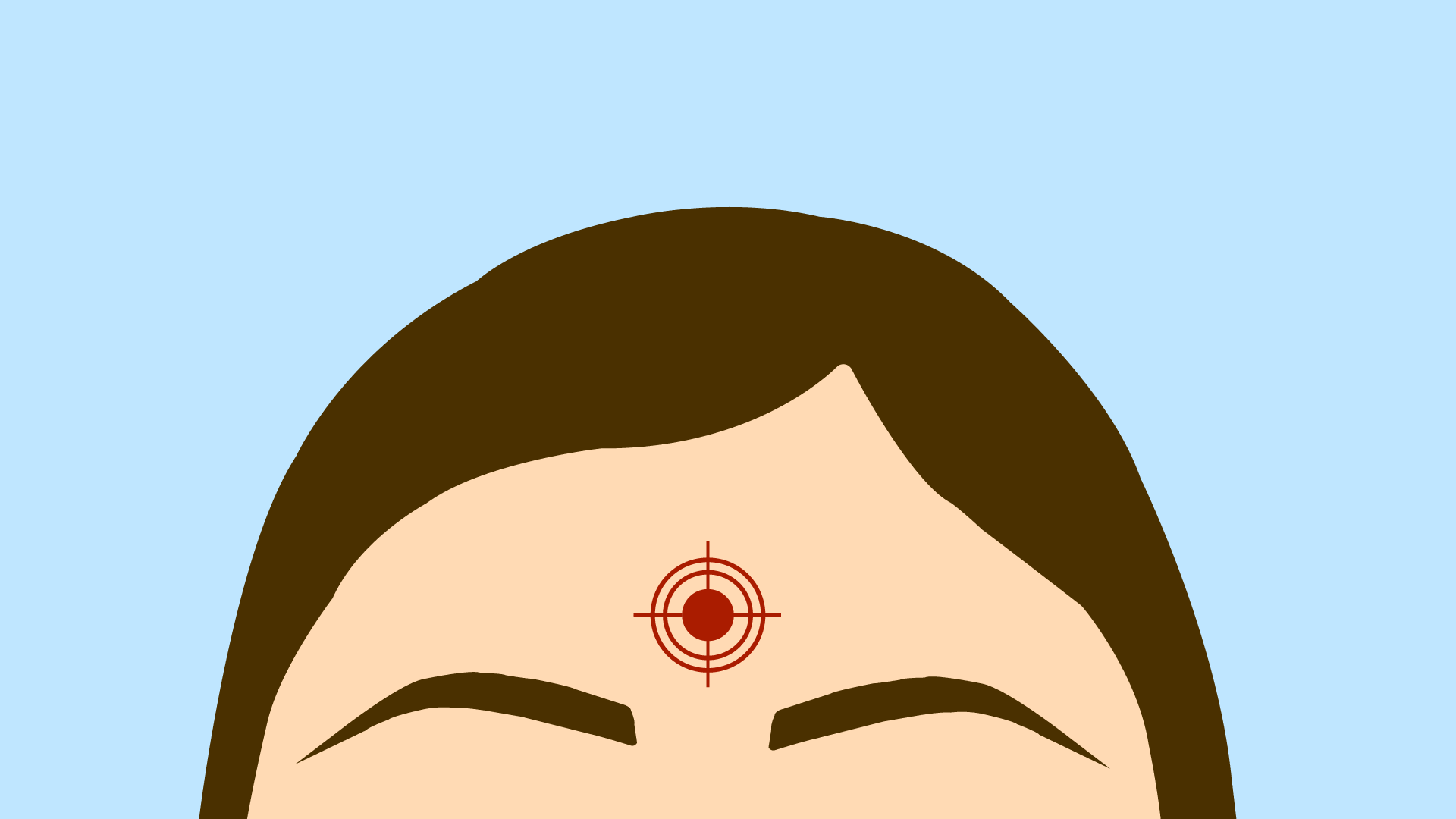Red dot and the history of Hinduphobia
Hinduphobia and how it made its way through history and to the contemporary worldGraphic by Disha Kumar, Features Editor
Casey Wong, Staff Writer
Forsyth County has seen a rise in Hinduphobia reminiscent of the late 80s and 90s as the “Red Dot Movement”, a protest against the establishment of a Hindu temple, rose. The community worried that the temple would generate excessive noise during the night and would install bright lights that would disturb neighbors. As a result, many signs emerged around the city expressing residents' opposition with the temple and Hindu people. The placards included the word “no” with a red dot in the middle which refers to the Bindi, a colored dot worn between the eyebrows and the center of the forehead of Hindu women on auspicious days or occasions.
“The Bindi signifies peace in the mind and femininity in women. To take something that has such an impact on [Hindus] and use it to target a religion just undermines the cultural significance,” Johns Creek High School’s president of the Hindu Student Council, Malvika Sawant said.
These signs have made the Hindu community feel unwelcome and, for some, evoke unpleasant childhood memories and encounters with Hinduphobia.
“I remember in fifth grade, I went to school after a night out with family but I had forgotten to take it [the Bindi] off. Everyone in my class made fun of me and made me feel so out of place,” Navina Doss, student at Milton High School was recently involved with Fulton County’s DEI protests, said. “It’s really upsetting to see this happen again now that I’m older.”
Hinduphobia remains a persistent problem for Hindu and South Asian American communities today. Although the issues posed by residents were primarily community concerns, the signs of protest have stimulated a tense environment for their Hindu counterparts.
“Hinduphobia is much older than many of the words you may know such as Islamophobia and Anti-Semitism. That naturally does not reduce their weightage...all I’m saying is that a lot of people do not know that the word Hinduphobia, the word itself, is much older,” Coalition of Hindus of North America (CoHNA) president, Nikunj Trivedi said.
Trivedi recalls a time in the late 80s and 90s a violent movement in New Jersey called the “Dot Busters.” The Dot Busters were a group that targeted Hindus.
“Many were hospitalized. They were beaten with baseball bats...I know many of my uncles went through that in New Jersey. So when such things like the Red Dot movement [occur] it arks back to those dark days where my family..not just my family but my friends’ families and everybody went through these types of hate crimes against the community.” Trivedi said.
The FBIk database for hate crimes stated that in 2020, hate crimes against Hindus alone were up by 500%. Trivedi also recognizes Anti-Asian Hatred in general has increased significantly in recent years in response to Covid-19, suggesting that allies and members of these groups must speak out against hatred and remain unified. While Hinduphobia has gone unnoticed in the past, it has certainly not dissipated.
“Although Hinduism is being taught in schools, it is almost never taught in a positive light, as it is depicted as an oppressive religion that supports the Caste System...no one ever talks about British colonialism or the invasion of the Muhgals has oppressed Indians more than Hinduism ever has,” Sawant said.
The lack of Hindu representation leaves room for misinterpretation and misinformation to foster hatred of the past.
“This was not a one time incident, this was kind of a historic thing that has been going on,” Trivedi said. “If people have an issue with noise or bright lights, that should be brought up in an amicable manner at city councils, but putting out signs specifically targeting the Hindu community is completely racist and xenophobic.”
Trivedi agrees that the issue of zoning or lights are valid, but states that people should bring up these problems in a respectful manner.
“Some people have a disdain for Hindus as ‘devil worshippers’ or worshippers of ‘fake gods and goddesses’ which is Hinduphobia and you cannot separate the two,” said Trivedi.
Some residents have taken it upon themselves to show support and remove the signs, to which Trivedi congratulates and encourages more support from allies.
“You have people who care about living in a multicultural, multi diverse community and society but you also have people who don’t want people who are different.” Trivedi said.
Though the topic of Hinduphobia is a sensitive one, and may bring back some dark memories for members of the Hindu community, individuals like Sawant andl the rest of CoHNA are doing their best to bring these matters to light.
Although the history of Hinduphobia has been overlooked in the past, CoHNA, Sawant and the Hindu Student Council, Doss, and many other Hindus and their allies hope that the injustices against Hindus will receive recognition and that the Hindu community will gain more support.


